Are you tired of battling the winter snow and wondering who's responsible for keeping your driveway clear? Navigating snow removal responsibilities can often lead to confusion among neighbors or even within families. In this article, we'll break down everything you need to know about snow removal duties, including tips for establishing clear communication and expectations. So grab a cup of hot cocoa and let's dive into the essentials of a snow-free winterâread on to learn more!
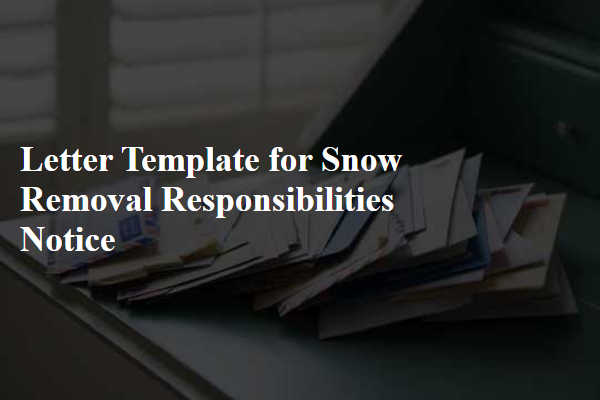
Clear Identification of Parties Involved
In a typical snow removal responsibilities notice, clear identification of parties involved is crucial. Property owner, such as the residential homeowner at 123 Winter Ave, must be distinctly noted as responsible for maintaining the front sidewalk and driveway. On the other hand, the contracted snow removal service, for example, SnowClear LLC, located in Springfield, is also essential to specify, as they hold the obligation of clearing common area pathways and parking lots. The agreement should provide specific details regarding the frequency of service, which may include immediate response for snow accumulation over 2 inches, and any penalties for failure to comply with the outlined responsibilities of each party. This clarity ensures accountability during winter months, preventing misunderstandings and promoting safety for all residents.
Specific Snow Removal Responsibilities and Procedures
In snowy regions such as Colorado and Minnesota, snow removal responsibilities are crucial for maintaining safety on sidewalks and driveways. Local ordinances often require property owners to clear snow within specific timeframes, usually within 24 hours after snowfall events exceeding 2 inches. Procedures typically involve shoveling walkways and applying salt or sand to prevent ice formation. Failure to comply can result in fines ranging from $50 to $200 imposed by local municipalities. Additionally, residents should be aware of the importance of clearing snow from fire hydrants and mailboxes, ensuring accessibility for emergency services and postal deliveries. Understanding these responsibilities fosters community safety and compliance with local regulations.
Defined Timeframes and Deadlines
Timely snow removal is essential for maintaining safety and accessibility in residential areas, particularly during winter months in locations like Minnesota, where snowfall can exceed 60 inches annually. Homeowners must adhere to specific timeframes for clearing sidewalks and driveways after a snow event, typically within 24 hours following the end of snowfall to prevent ice formation. Local ordinances often dictate that snow must be removed from roofs and gutters to avoid structural damage, especially when snow accumulation reaches depths of 12 inches. Failure to comply can result in fines or other penalties, emphasizing the importance of being diligent about snow removal responsibilities. Consistent communication with neighbors can foster a cooperative community approach to snow management, ensuring that pathways remain clear and safe for all residents and visitors alike.
Contact Information for Questions and Clarifications
Snow removal responsibilities vary by municipality and may include important guidelines for homeowners and property managers. In regions such as the Midwest, where snowfall can exceed 100 inches annually, timely snow removal is crucial for safety. Local laws may mandate that residential properties clear sidewalks within 24 hours after a snowfall exceeds two inches. Equipment such as snow plows and shovels must be used properly to avoid damage to surfaces. Additionally, salt or sand application can prevent slipping hazards. Local public works departments often provide resources for snow removal services, and homeowners are encouraged to check for specific ordinances in counties like Cook County, Illinois, or Wayne County, Michigan, to ensure compliance during winter events. For any questions or clarifications regarding responsibilities, property owners can typically contact the relevant municipal office or snow removal agency directly.
Legal Compliance and Liability Statements
Snow removal responsibilities in residential areas often fall under various municipal regulations, which require property owners to maintain clear pathways during winter months. Local ordinances typically stipulate that homeowners must remove snow from sidewalks within a specific timeframe, often within 24 hours after a snowfall. Failure to comply can result in fines, which may vary by city, sometimes reaching up to $500 for repeated violations. Furthermore, liability issues arise if someone slips and falls due to uncleared snow or ice. The property owner may face legal consequences, including personal injury claims, if negligence in snow removal can be established. Therefore, understanding local laws and ensuring timely removal of snow not only promotes public safety but also protects property owners from potential legal challenges.

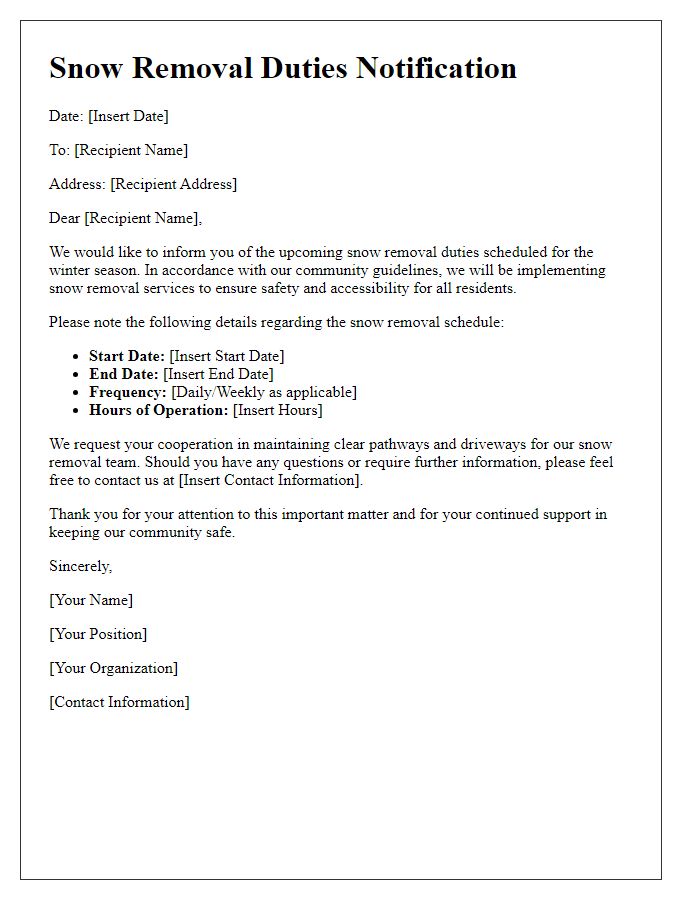
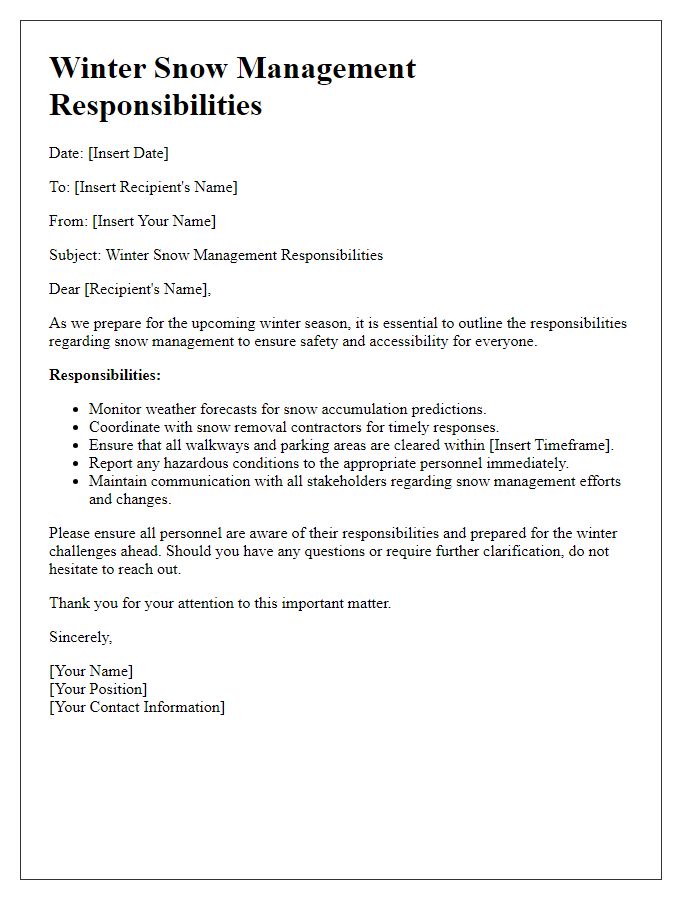
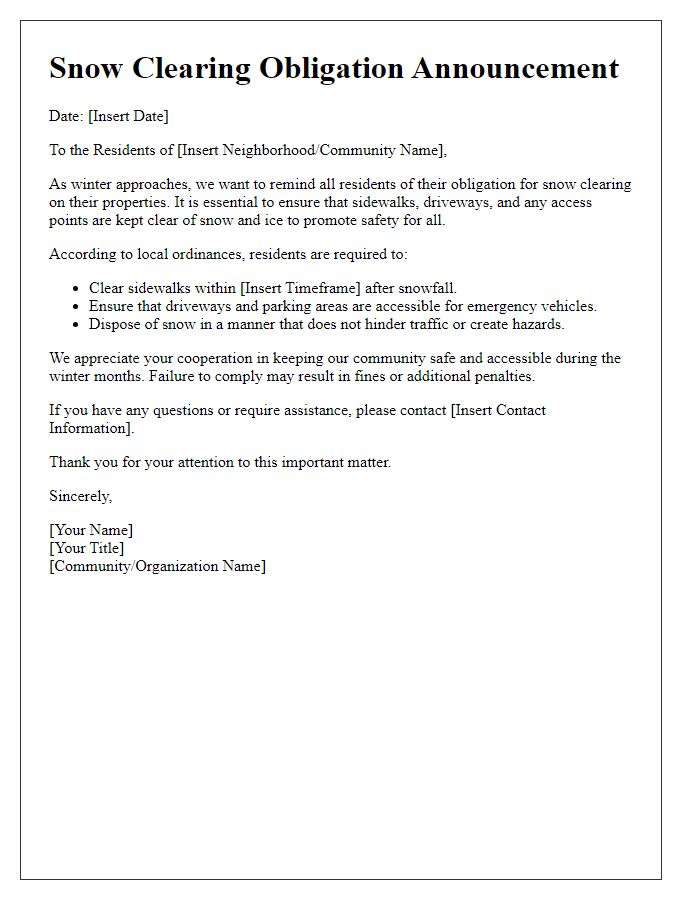
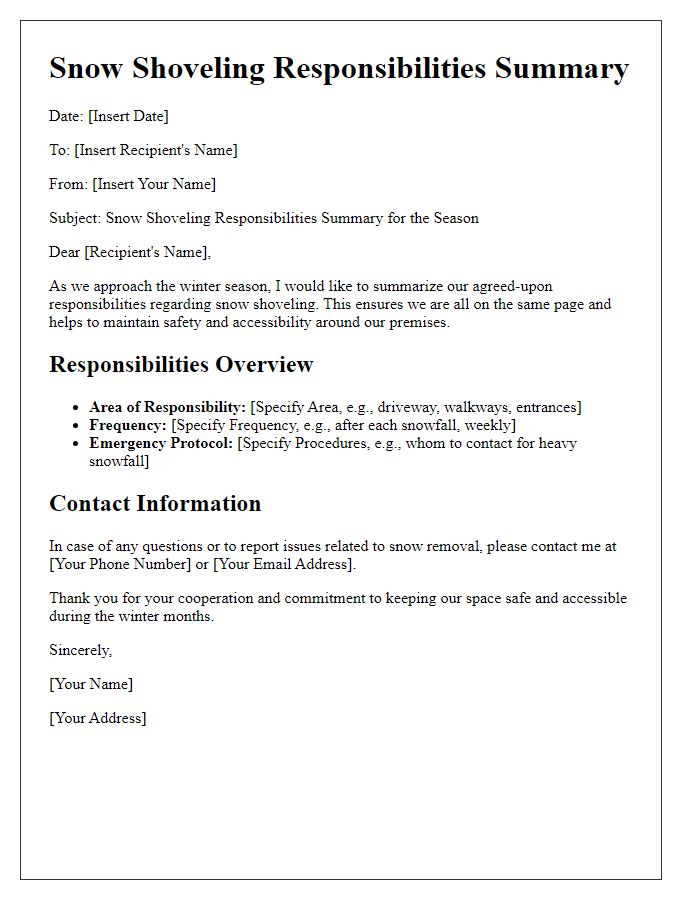
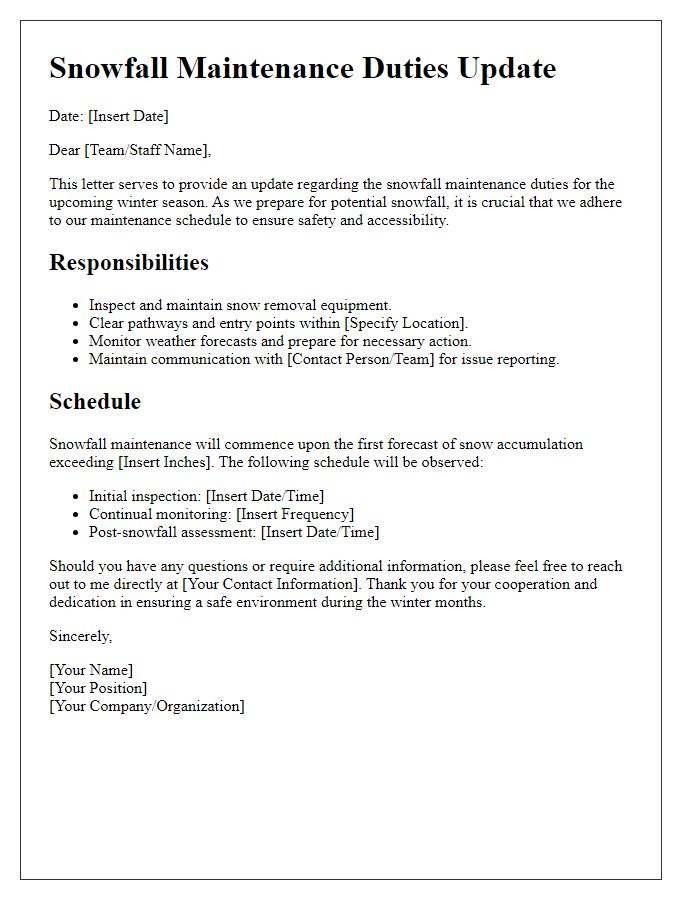
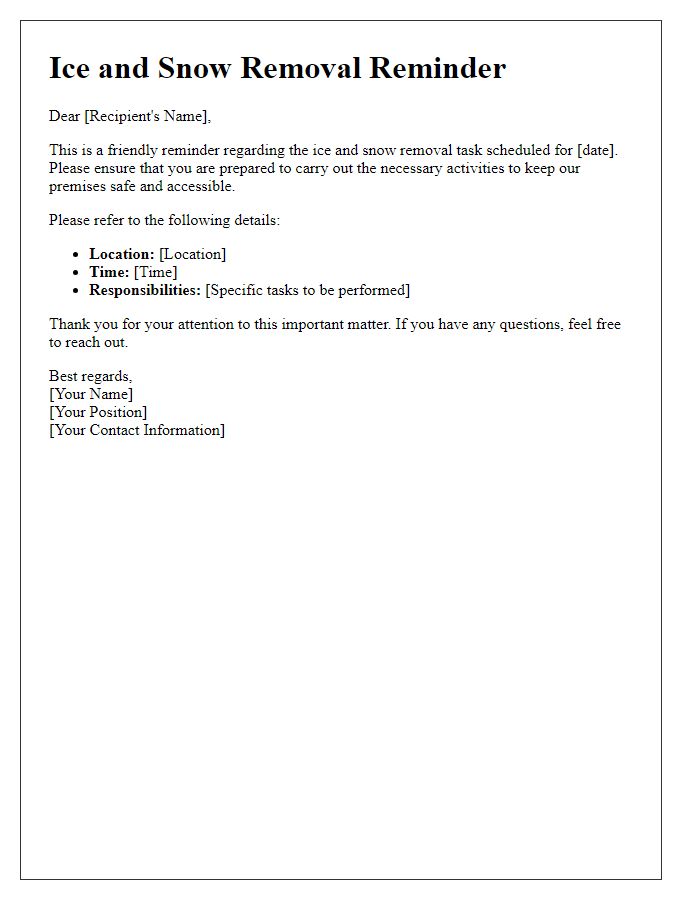
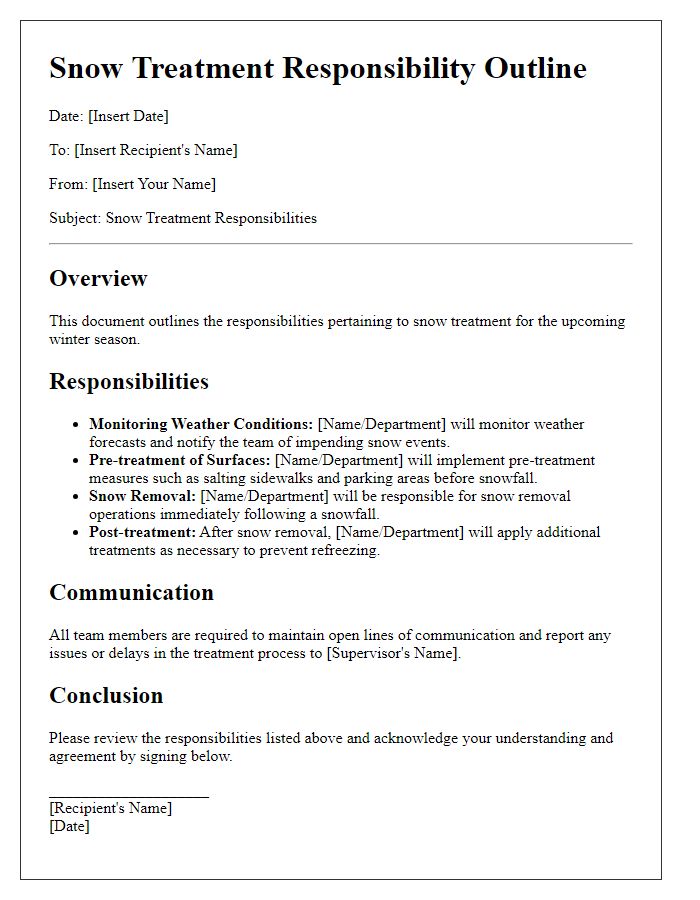
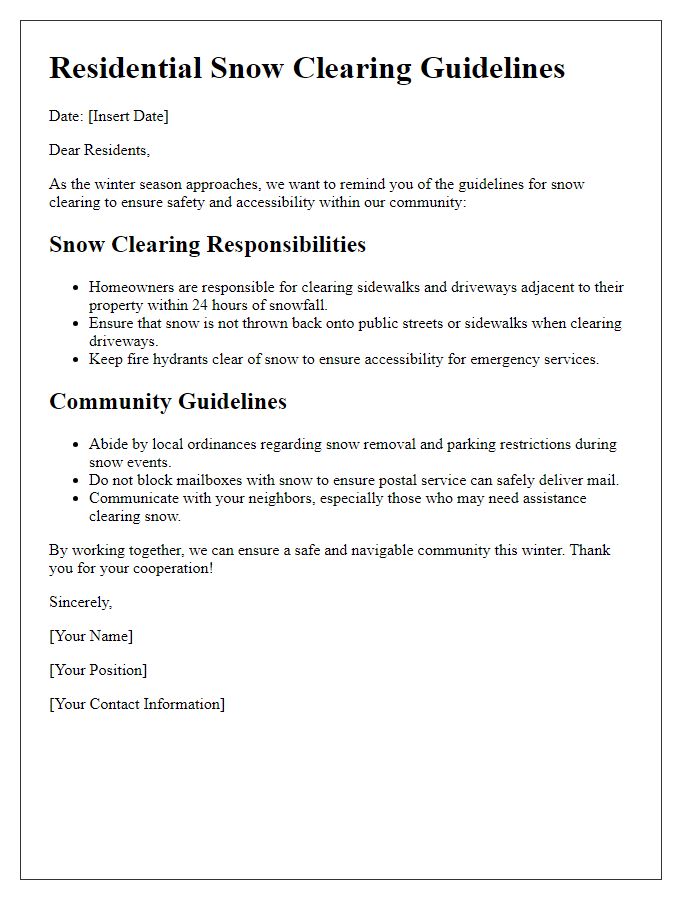
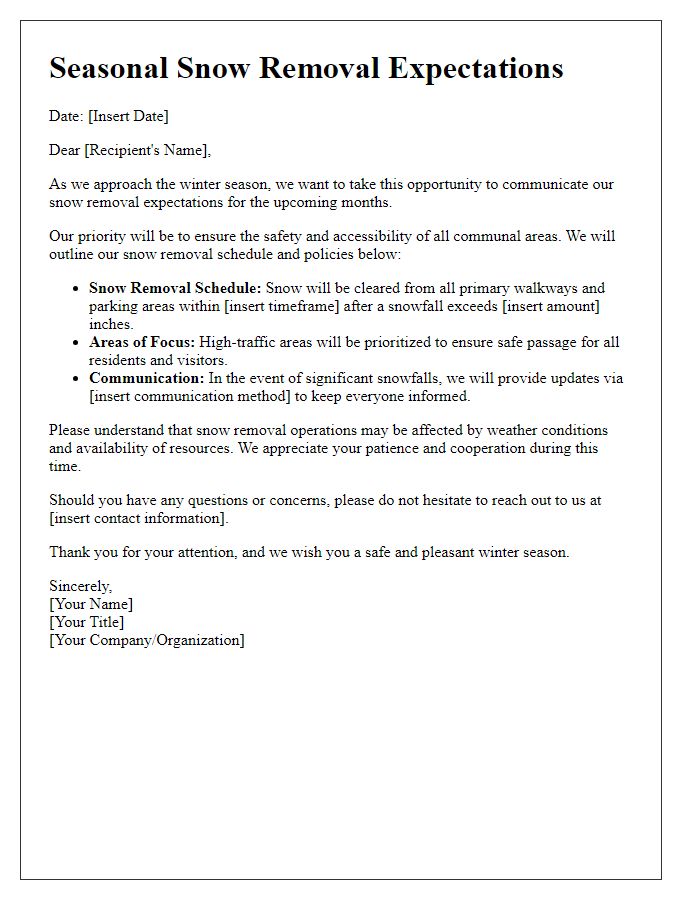
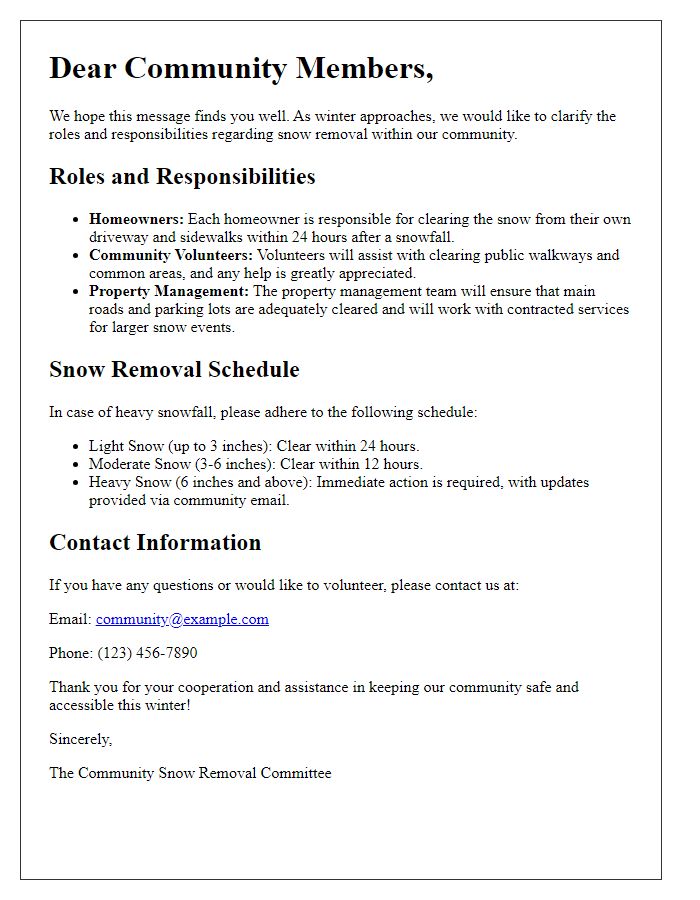


Comments